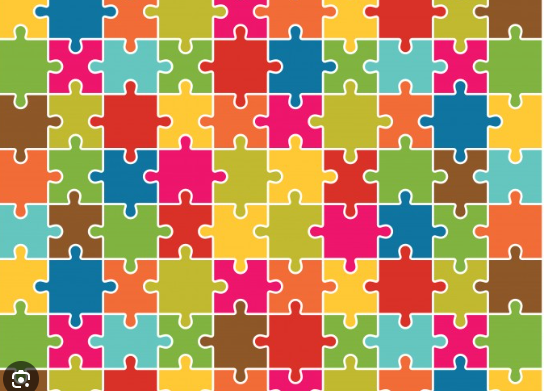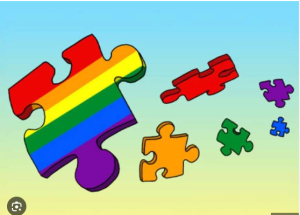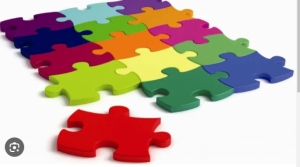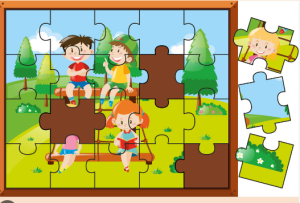Introduction (150-200 words)
Begin by captivating your readers with the allure of puzzles. Discuss their universal appeal, from childhood games to complex challenges for adults. Highlight their role in stimulating cognitive abilities and fostering creativity. Introduce the idea that behind every puzzling experience lies an intricate process of creation.
The Anatomy of Puzzle Creation
1. Understanding the Puzzle Landscape (300-400 words)
Explain the diverse types of puzzles: from crosswords and jigsaws to brain teasers and cryptic puzzles. Dive into the history of puzzles, showcasing their evolution and cultural significance. Discuss their presence in different societies and how they’ve adapted to modern technology.
2. Conceptualization Phase (300-400 words)
Explore how puzzle creators conceive their ideas. Discuss the importance of inspiration, brainstorming techniques, and how they draw from various sources—mathematics, logic, art, and everyday life. Highlight the balance between challenge and enjoyment that creators aim for.
3. Design and Development (400-500 words)
Detail the intricate process of translating ideas into tangible puzzles. Discuss the tools and software used, emphasizing the role of design principles. Showcase the planning behind a puzzle’s layout, structure, and difficulty progression. Include insights from professional puzzle makers or game designers.
4. Testing and Iteration (300-400 words)
Illustrate the crucial phase of testing puzzles for logic, coherence, and difficulty. Explain how creators gather feedback, refine, and iterate their puzzles. Emphasize the importance of user experience and the fine-tuning required to strike the right balance between challenge and solvability.
5. Final Touches and Release (200-300 words)
Discuss the final stages of polishing puzzles, including aesthetics, theming, and packaging. Explore how puzzles are marketed and distributed across various platforms—print, online, or in-game. Highlight the satisfaction and anticipation of both creators and users upon the puzzle’s release.
Conclusion (150-200 words)
Summarize the intricate process of puzzle creation, emphasizing its blend of artistry, logic, and psychology. Reinforce the significance of puzzles in fostering critical thinking and problem-solving skills. Encourage readers to appreciate the craftsmanship behind every challenging puzzle they encounter.
Step 1: Conceptualization
The puzzle creation journey typically commences with a spark of inspiration. This could arise from everyday experiences, abstract ideas, or a desire to innovate. Creators ponder over the puzzle’s theme, its intended difficulty level, and the target audience. Brainstorming sessions generate initial concepts and structures, defining the puzzle’s essence.
Step 2: Design and Structure
Once the concept is clear, creators delve into designing the puzzle’s layout. For instance, in a jigsaw puzzle, this phase involves sketching out the overall image and determining the number and shapes of pieces. Crossword or Sudoku puzzles require grid designs and rules for filling them in. This stage is critical, setting the foundation for the puzzle’s functionality.
Step 3: Development of Clues or Elements
Puzzles often incorporate clues or elements that guide solvers toward the solution. Designers carefully devise these hints, ensuring they strike a balance between being challenging enough to engage participants yet not overly obscure to cause frustration. Clues can be visual, textual, numerical, or even interactive, depending on the puzzle type.
Step 4: Testing and Refinement
Testing is pivotal in puzzle creation. Creators subject their puzzles to rigorous testing, often by diverse groups or individuals, to identify flaws, ambiguities, or unintended solutions. This stage helps refine the puzzle, adjusting difficulty levels and fine-tuning clues to ensure a satisfying solving experience.
Step 5: Iteration and Enhancement
Feedback from testing leads to iterative improvements. Puzzle creators revisit earlier stages, modifying design elements, reworking clues, or altering structures to optimize the puzzle’s flow and challenge. This iterative process continues until the puzzle attains the desired level of intricacy and engagement.
Step 6: Production and Presentation
Once the puzzle reaches its final form, it’s prepared for presentation. For physical puzzles like jigsaws or mechanical puzzles, this involves manufacturing and packaging. Digital puzzles require coding, formatting, and user interface design. The presentation stage ensures the puzzle is accessible and appealing to its intended audience.
Step 7: Distribution and Feedback
Publishing or sharing the puzzle marks the culmination of the creation process. Creators disseminate their puzzles through various platforms—books, websites, apps, or physical outlets. Feedback from solvers becomes invaluable, providing insights for future creations and fostering a sense of community among puzzle enthusiasts.
Introduction to Puzzle Creation
Puzzles come in various forms, including crosswords, Sudoku, jigsaw puzzles, logic puzzles, and more. Crafting these brain-teasing challenges involves a systematic approach that merges artistry and problem-solving skills.
Step 1: Conceptualization
Identify the Puzzle Type:
- Choose the Puzzle Style: Decide on the type of puzzle to create based on your audience’s preferences and the level of complexity you aim to achieve.
- Define the Objective: Determine what the solver needs to accomplish. Is it finding a hidden message, completing a pattern, or solving a series of interconnected problems?
Step 2: Design and Structure
Framework Development:
- Develop the Grid or Layout: For puzzles like crosswords or Sudoku, design the grid structure considering size, shape, and difficulty.
- Create Rules and Constraints: Establish clear guidelines and rules for solving the puzzle. Ensure these rules are consistent and logical.
Step 3: Generating Content
Content Creation:
- Clue Generation: For word-based puzzles, create clues that are challenging yet fair. Clues should lead solvers toward the correct solution without being too obscure or too obvious.
- Puzzle Elements: In puzzles like jigsaw puzzles or visual brainteasers, design or curate images or patterns that will be divided into pieces for assembly or deciphering.
Step 4: Testing and Refinement
Quality Assurance:
- Preliminary Testing: Solve the puzzle yourself and have a small group of testers attempt it. Note areas of confusion or difficulty.
- Iterative Refinement: Modify clues or puzzle elements based on feedback. Ensure the puzzle has a single valid solution (if applicable) and is satisfyingly challenging.
Step 5: Formatting and Presentation
Final Touches:
- Layout and Formatting: Arrange the puzzle and its accompanying clues or instructions in an aesthetically pleasing and easy-to-understand format.
- Consider Accessibility: Make sure the puzzle is accessible to a wide audience and doesn’t exclude individuals based on ability or background.
Step 6: Publishing and Distribution
Sharing the Puzzle:
- Choose the Platform: Decide where and how to publish the puzzle—online blogs, newspapers, magazines, apps, or social media.
- Provide Instructions: Include clear instructions or guidelines for solving the puzzle to assist solvers.



